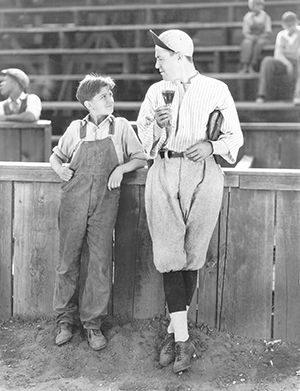Diamond in the Vines
Baseball and wine play ball!

Baseball is “the ephemeral story told over the course of a season,” writes Michael D ‘Antonio in his 2009 sports-bio, “Forever Blue: The True Story of Walter O’Malley.” In a sense, all sport is fleeting to the daily goings-on of any city holding a major league franchise in any sport. Baseball’s hold on its place assumes mythic proportions, and the club fortunes reflect in the attitudes of the locals.
Dodger fans of Brooklyn were divorced from their Flatbush mythology only to see it successfully relocated to Los Angeles in 1957. This move, along with the Giants’ arrival in San Francisco, made the “national pastime” truly national.
Wine, too, parallels this natural order. Even before bud break to fermentation in the winery, the enterprise is its own “game of inches” — as some describe close plays on the diamond. The record harvests reported for the vintage year 2014 tie directly to the average mean temperature overnight in much of the Willamette Valley. This modest variance produced a huge crop.
Though the post-season outcomes for wine take time in the barrel and bottle before the results arrive, even this asynchrony does not spoil the underlying rhythms shared by the game and the grape. What matters is the story. A vintage is the work of hands and days, just like a baseball season. Vines and vintners do not play to thunderous crowds. However, the course of the season is day-in and day-out, like the 162-game grind the “bigs” put the fans and their teams through each year.
In spring training, the players haul themselves away from their mansions and memorabilia expos to the Arizona desert or southern Florida. They drill. They run. They shake off the winter torpor in the sunshine. The team reconstitutes itself as the manager and the regular coaching staff evaluate the roster. It is a season of risk. So often, a player makes a mistake and breaks a leg. The pitcher’s arm falls off. Careers can end before the Big Show begins at the close of March.
Vineyards, too, have field managers, or coaches, so to speak. Every producing vine has been coaxed along to yield optimal fruit for making wine five or six months later. A sports field manager tries to build momentum with his team; while a vineyard manager applies a myriad of tasks to ensure the vines mature and ripen, usually with an eye on the appeal and structure of the end product. Yes, there’s joy in the game, but the sense of fun comes out of a bargain: Baseball and winemaking are businesses.
Baseball parks form part of a civic commercial core in a city. They represent the third iteration of the yard. As the Edwardian places built near the turn of the last century crumbled, they were replaced in the 1960s by multi-use concrete cisterns with little charm and plastic turf. Then the imperious owners, planners and tycoons realized that where the game played out was no container, but a stage. Each park became more of a destination than an arena. Such, as it is, with wine. Visit today’s Ponzi Vineyards, Sokol-Blosser or even Stoller Family Estate , and you’ll discover not only great wines, but also destination-worthy stops.
If baseball’s product is a good team, the winery’s is, of course, great wine. However, these products represent more; they are entertainment venues. Thus, they contribute significantly to surrounding commerce — hospitality, restaurants, transportation, and, above all, employment and redevelopment. The entertainment in turn is supported by media — there’s more to pastoral innocence than sheep; there’s tourism.
Like the ballfield, green and manicured, the vineyard has its own grounds crew making sure nature doesn’t throw in a ringer. But it happens. Once, a baseball game in Brooklyn was called on account of apocalyptic swarms of flying bugs — Casey Stengel said you can look it up. In 2010, the Willamette Valley contended with an incredible invasion of birds, as if they were invited to a picnic in and around the canopies. Besides hungry pests, we know games and, sometimes, whole vintages can be wiped off the books by frost, hail or even rain.
Last year, Napa and Sonoma AVAs — already suffering from Biblical drought and Saharan heat — experienced a 6.0-plus earthquake. Some winery libraries took a big hit. My friend at Road 31 at Carneros lost some dinnerware at his house, but no Pinot Noir resting in the caves. Said Kent Fortner, owner and winemaker, “Well, maybe we can have a yard sale and then get some new dishes.” For every winning streak there is bound to come its opposite.
The real story unfolds, as noted, day in and day out. Crowds gather at one place, swill bad beer, eat hotdogs of undocumented origins, and pay too much for parking. Thank television for all of this. On the vineyard side, the crowds come, swill and swirl and spill wine, eat very good local cheese, and purchase a gewgaw or two, maybe even a bottle of wine. But they need not pay for parking. Thank goodness television has not bought the broadcast rights.
As money rules the rows, so very accomplished winemakers journey from one project to another, like relief pitchers and other specialists hired to be proficient at one thing. It has become difficult to balance tradition with celebrity appeal and notoriety. I think too often huge increases in case output diminish the artisans’ take on the role of a middle reliever, or a winemaker. The connection to the place has to remain more than just talented lucre.
The most significant parallel remains the ephemeral story told in mild weather. It is the season, or vintage, that takes its place in the hierarchy of private associations, impressions and memory. The sport does differ in the sense that the product ends when someone wins the Commissioner’s Trophy and the pennants fly the next season. With wine, though, the anticipation lingers until release date, perhaps several years down the line. Then we know whether the pennants wave in the vast blue sky.
Memories of both the baseball season and the vintage linger long after they conclude. For baseball, gratification comes in 162 events per season plus post-season matches. With wine, the shared meals, the companions and the laughter make the vintage unique. Both the ballyard and vineyard inform our own narratives, leading to private discoveries and private truths.
D ‘Antonio remarks elsewhere in his O’Malley tale that baseball is “pastoral, male and romantic.” Without overworking the analogy, I think the sport contains the Arcadian aspect of a “green world.”
Pastoral landscapes and enclosed gardens stand outside the corrosions of what we now call “real-time.” Pastoral recalls a more innocent world, where kids play pickup ball on new-mown grass and pretend to be their favorite players. It seems a place that will live forever. Each walk between vines elicits a similar impression of a lasting kinship with our immediate surroundings.
Care and time invade the reveries. But we retain the impressions and the memories. Vintages are future calculations about the value of a good bottle of wine. Baseball beat writers and wine writers live on the rush of future calculations—immersed in moments, yet waiting for the extraordinary.
“Romance” holds the key to institutional memory for storied baseball teams like the Cubs, Sox or Yankees. It also holds the same for wineries. Library selections are usually sold at a premium because they preserve the memory of past vintages. Earthquakes can happen, though. Trefethen Vineyards in Napa Valley recently suffered quake damage to its library; but it was other forces that brought ruination. The heirs to Robert Mondavi made oodles of money in a public offering only to lose, for some time, the particular value of its own institutional memory. In baseball, as in winemaking, “success” may become far more hazardous to good times than pulled hamstrings or phylloxera on the back 40.
One element will not change, though. “Wait ‘til next year” is baseball’s mantra. Fortunes may wobble from season to season, but spring will always rise to the sounds of cheers, crack of the bat and pop of the ball as it disappears into the catcher’s mitt. Likewise, the dormant vines soldiering down the slope are hardly without life. The buds will emerge to break, and the new season will hold its promise. It is the recurring stuff of memory. Play ball.
The diamond and the vineyard both meet where our personal memories concerning time and place merge with a larger, less nuanced world. Each of us stand at the turnstile, ticket in hand, ready to pass from innocence to experience. Or, perhaps, the ticket takes us the other way around.

 Ken Friedenreich is writing a book on Oregon wine called “Decoding the Grape.” He contributes to various publications as a wine editor and columnist.
Ken Friedenreich is writing a book on Oregon wine called “Decoding the Grape.” He contributes to various publications as a wine editor and columnist. 





